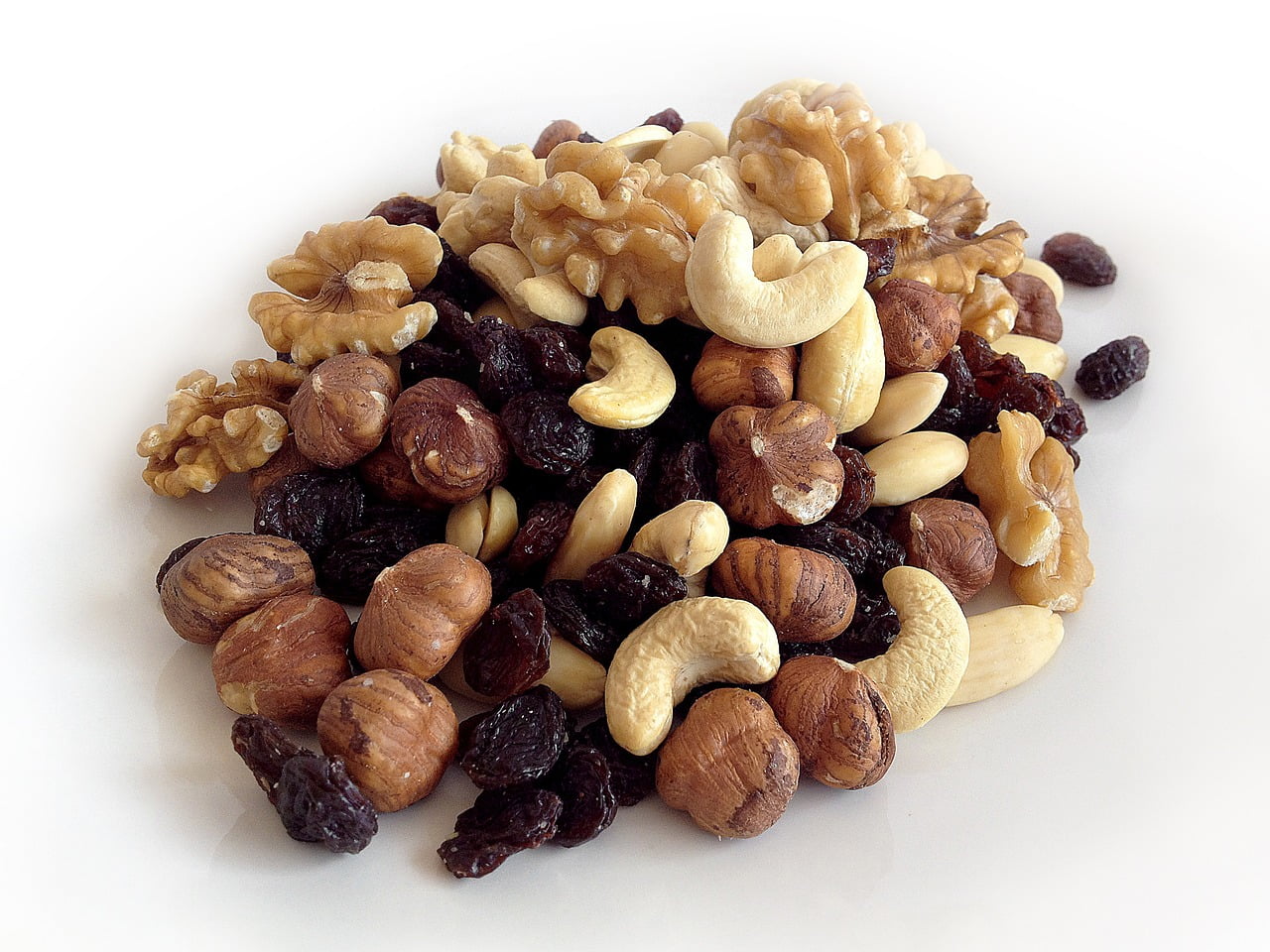A Guide that Explores Sushi. Discover the rich history of sushi, tracing its roots back to ancient Japan and the innovative techniques that have shaped it into the beloved cuisine we know today. Dive into the diverse range of sushi rolls, including classic favorites like the California roll and spicy tuna roll, as well as lesser-known delicacies such as the rainbow roll and dragon roll.
Learn about the artistry involved in sushi-making, from the meticulous selection of fresh ingredients to the precise knife skills required for perfect cuts. Explore the various methods of sushi preparation, including nigiri, sashimi, and maki rolls, each offering a unique taste and texture experience.
Whether you’re interested in sushi etiquette, exploring vegetarian options, or seeking guidance on pairing sushi with the perfect sake, this guide has got you covered. So, grab your chopsticks and get ready to embark on a mouthwatering journey through the world of sushi, where tradition meets innovation and every bite is a delicious adventure.

Best Types of Sushi Guide Sushi that explores it.
When it comes to sushi, there are countless delicious varieties to choose from. While it’s challenging to narrow it down to just five, here are five of the best and most popular types of sushi that you definitely shouldn’t miss:
1. Nigiri:
Nigiri sushi consists of a small mound of vinegared rice topped with a slice of fresh seafood such as tuna, salmon, or shrimp. It showcases the natural flavors of the fish and is often served with a dab of wasabi between the rice and fish.
2. Sashimi:
Sashimi is not technically sushi, as it doesn’t involve rice. It is a dish consisting of thinly sliced raw seafood, typically served with soy sauce and wasabi. Common sashimi choices include tuna, salmon, yellowtail, and octopus.
3. Maki:
Maki rolls are the most recognizable type of sushi, featuring a combination of rice, fish, and vegetables wrapped in a sheet of seaweed (nori). Popular maki rolls include the California roll, which combines crab, avocado, and cucumber, and the spicy tuna roll, which includes spicy tuna and cucumber.
4. Temaki:
Temaki sushi is a hand-rolled cone-shaped sushi that is made by wrapping rice, fish, vegetables, and other fillings in a sheet of nori. It offers a fun and interactive eating experience and allows for customization based on personal preferences.
5. Chirashi:
Chirashi sushi is a beautiful dish that consists of a bowl of sushi rice topped with an assortment of sashimi, vegetables, and garnishes. It’s like a sushi salad, offering a visually appealing and flavor-packed experience.
These are just a few examples of the wide variety of sushi available. Each type has its own unique flavors and textures, so feel free to explore and discover your personal favorites in the world of sushi

History of Sushi
Sushi, a beloved culinary art form, has a rich and fascinating history that spans centuries. From its humble beginnings as a preservation method in ancient Southeast Asia to its status as a global delicacy, the story of sushi is one of innovation and cultural exchange. Let’s delve into the captivating history of sushi.
Origins in Preservation:
The origins of sushi can be traced back to 4th century Southeast Asia, where fish was preserved by fermenting it with rice and salt. This method allowed fish to be stored for months, providing a valuable food source.
Introduction to Japan:
Sushi made its way to Japan around the 8th century, where it underwent significant changes. The rice, previously discarded, became an essential part of the dish. The fermentation process was shortened, resulting in a style known as narezushi.
Development of Nigiri:
In the 19th century, Tokyo witnessed the emergence of nigiri sushi. This technique involved placing a slice of raw fish on a small mound of vinegar-seasoned rice, creating a harmonious blend of flavors.
Rise of Edo-Mae Sushi:
During the Edo period (1603-1868), the bustling city of Edo (now Tokyo) became the center of sushi innovation. Chefs experimented with various ingredients and techniques, giving birth to the Edo-mae style of sushi. This style emphasized the use of fresh, high-quality fish and precise knife skills.
Modernization and Global Popularity:
In the 20th century, sushi underwent significant transformations. The invention of refrigeration allowed for the expansion of sushi beyond Japan’s borders. Sushi bars and restaurants began to appear worldwide, captivating people with their exquisite flavors and artistic presentation.
Today, sushi has evolved into a diverse and dynamic cuisine, incorporating regional and international influences. From traditional nigiri and maki rolls to modern fusion creations, sushi continues to captivate the food enthusiasts worldwide, showcasing the rich history and ongoing evolution of this remarkable culinary tradition

How to Cook Sushi at Home
Cooking sushi at home can be a fun and rewarding experience. While traditional sushi-making requires practice and skill, there are simplified methods that you can try. Here’s a step-by-step guide on how to cook sushi at home.
Gather the Ingredients:
- Sushi rice: Short-grain Japanese rice, rinsed well
- Nori: Dried seaweed sheets
- Fresh fish or other seafood (such as salmon, tuna, and shrimp) or cooked alternatives (like imitation crab or tofu)
- Vegetables (e.g., cucumber, avocado, carrot) for filling
- Soy sauce, wasabi, and pickled ginger for serving
Prepare the Sushi Rice:
- Cook the rinsed rice according to the package instructions.
- While the rice is still warm, transfer it to a large bowl and season it with sushi vinegar (a mixture of rice vinegar, sugar, and salt). Gently fold the rice to coat it evenly while being careful not to crush the grains.
Prepare the Fillings:
- Slice the fish or seafood into thin strips. If using vegetables, cut them into long, thin sticks.
- Have all the fillings ready and easily accessible for assembling the sushi rolls.
Roll the Sushi:
- Place a sheet of nori on a bamboo sushi mat or a clean kitchen towel.
- Moisten your hands with water to prevent sticking, then take a handful of sushi rice and spread it evenly over the nori, leaving a small space at the top edge.
- Arrange your desired fillings on the lower half of the rice-covered nori sheet.
- Using the mat or towel, carefully roll the sushi tightly, applying gentle pressure to ensure it holds together. Wetting the top edge of the nori lightly will help seal the roll.
Slice and Serve:
- With a sharp knife, slice the sushi roll into bite-sized pieces.
- Arrange the sushi on a platter and serve it with soy sauce, wasabi, and pickled ginger.
Remember, sushi-making takes practice, so don’t be discouraged if your first attempts aren’t perfect. As you gain experience, you can explore different sushi styles, fillings, and techniques. Have fun experimenting and enjoy the satisfaction of creating delicious sushi in the comfort of your own home.

How to Eat Sushi With Other Dishes
Sushi is a versatile dish that can be enjoyed on its own or paired with other complementary dishes. Here are a few suggestions on how to eat sushi alongside other dishes:
Miso Soup: Start your sushi meal with a bowl of warm miso soup. Its savory flavors and comforting nature complement the freshness of sushi. Sip the soup between sushi bites to cleanse your palate.
Edamame: Steamed or boiled edamame, young soybeans in the pod, make a great side dish for sushi. Sprinkle them with a bit of salt and enjoy their mild and slightly sweet flavor alongside your sushi.
Tempura: Tempura, lightly battered and deep-fried vegetables or seafood, can be a delightful accompaniment to sushi. The crispy texture and delicate flavors of tempura add variety and contrast to your meal.
Seaweed Salad: Seaweed salad, made from various types of seaweed, offers a refreshing and slightly salty taste. Its unique texture and umami flavors provide a nice contrast when enjoyed alongside sushi.
Sashimi Platter: If you’re a fan of raw fish, consider complementing your sushi with a sashimi platter. Savor thin slices of fresh fish, such as tuna, salmon, or yellowtail, on their own or with a touch of soy sauce and wasabi.
Pickled Vegetables: Pickled vegetables, like pickled ginger or daikon radish, are often served alongside sushi. These tangy and crisp bites add a zingy flavor that can balance the richness of certain sushi rolls.
Green Tea: Pair your sushi meal with a cup of traditional Japanese green tea. Its subtle bitterness and cleansing properties can enhance the overall dining experience.
There are no strict rules when it comes to enjoying sushi with other dishes. Feel free to mix and match according to your preferences and explore different combinations to create a well-rounded and satisfying meal.

Steps to Eat Sushi With Chopsticks
Eating sushi with chopsticks can be a skill to master, but with a little practice, you’ll soon be able to enjoy your sushi effortlessly. Here are the steps to eat sushi with chopsticks:
- Hold the Chopsticks: Hold one chopstick between your thumb and index finger, resting it on the base of your thumb. Place the other chopstick between your index and middle fingers, similar to holding a pen. The ends of the chopsticks should be even and parallel to each other.
- Pick up the Sushi: Identify the sushi piece you want to eat. Use your chopsticks to grip the sushi in the middle or towards one end, depending on its size and shape. Apply gentle pressure to securely hold the sushi without squishing it.
- Dip in Soy Sauce: If desired, lightly dip the fish side of the sushi into a small dish of soy sauce. Be careful not to soak the rice as it can cause the sushi to fall apart.
- Raise and Rotate: Lift the sushi piece off the plate, keeping it level and stable between the chopsticks. Rotate your wrist if necessary to position the fish side towards your mouth.
- Bite-sized Portions: Take small, bite-sized portions of sushi to fully appreciate the flavors and textures. Avoid taking excessively large bites that may be difficult to chew or risk the sushi falling apart.
- Enjoy: Place the sushi piece in your mouth and savor the combination of flavors. Chew slowly to fully experience the taste, and feel free to use your chopsticks to adjust any toppings or garnishes.
- Repeat: Continue enjoying each sushi piece, following the same process of picking up, dipping (if desired), raising, and savoring. Take your time and enjoy the experience.
Using chopsticks takes practice, so don’t worry if you find it a bit challenging at first.

FAQs
What is sushi?
Sushi is a Japanese dish that typically consists of vinegared rice combined with various ingredients such as seafood, vegetables, and sometimes tropical fruits. It is often wrapped in seaweed (nori) and served in bite-sized pieces.
Is all sushi raw fish?
No, not all sushi contains raw fish. While some types of sushi, like sashimi, feature raw fish slices, there are many other varieties that include cooked seafood, vegetables, or even vegetarian options.
What is the difference between sushi and sashimi?
Sushi refers to a dish made with vinegared rice, while sashimi specifically refers to thinly sliced raw fish or seafood served without rice. Sashimi is typically enjoyed on its own or with a small amount of soy sauce and wasabi.
Is it safe to eat raw fish in sushi?
Eating raw fish in sushi can be safe if it is sourced from reputable suppliers and handled properly. The fish used in sushi should be fresh, high-quality, and prepared under strict hygiene standards to minimize the risk of foodborne illnesses.
What are the different types of sushi rolls?
Sushi rolls, or makizushi, come in various styles and flavors. Some popular types include California rolls (with crab, avocado, and cucumber), spicy tuna rolls, and tempura rolls (featuring battered and deep-fried ingredients). There are also specialty rolls with creative combinations and unique ingredients.
Can I make sushi at home?
Yes, sushi can be made at home. While traditional sushi-making requires skill and practice, there are simplified methods that beginners can try. With some basic ingredients and utensils, you can create your own sushi rolls and nigiri. There are also sushi-making kits available to make the process easier.
What sauces and condiments are commonly served with sushi?
Soy sauce is a popular condiment for dipping sushi. Wasabi, a spicy green paste, is often mixed with soy sauce for an extra kick. Pickled ginger is also served to cleanse the palate between different types of sushi.
Can vegetarians or vegans enjoy sushi?
Yes, there are vegetarian and vegan options in sushi. Vegetable rolls, like cucumber or avocado rolls, are common choices. Additionally, some sushi restaurants offer creative vegetarian rolls using ingredients like tofu, mushrooms, or tempura-battered vegetables.























